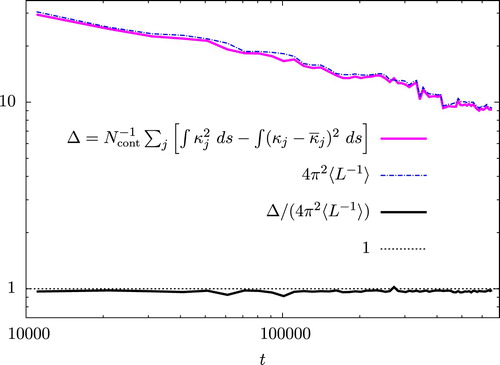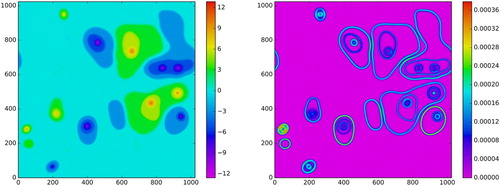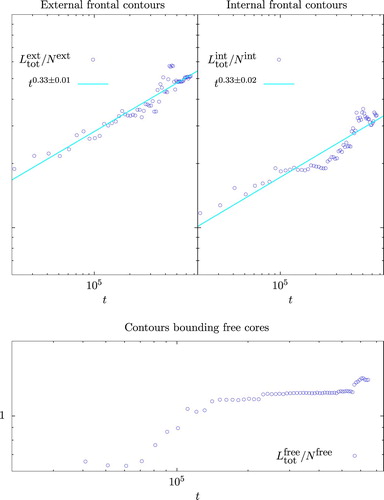Figures & data
Figure 1. Potential vorticity field at t = 0 (left), t = 20, 000 (middle) and t = 50, 200 (right). (Colour online).

Figure 2. Kinetic energy density at t = 0 (left), t = 20, 000 (middle) and (right). (Colour online).

Figure 4. Left: typical area of mixed regions bounded by external fronts (black squares) with least squares best fit line (solid black), typical area
(violet triangles) with best fit line (dashed violet), typical area
of mixed regions bounded by internal fronts (blue asterisks) with best fit line (dash-dot blue), and typical area
regions within free vortex cores (magenta circles), with best fit line (magenta dotted). Right: number of mixed regions bounded by external fronts (black squares) with least squares best fit line (solid black), mixed regions bounded by internal fronts (blue asterisks) with best fit line (dash-dot blue), and regions within free vortex cores (magenta circles). (Colour online).
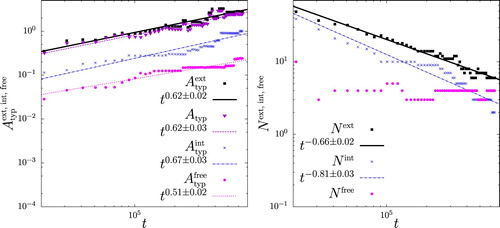
Figure 5. Results of the mixed region and free vortex core extractions (left) and high-speed contour extractions (right) at t = 403, 000. Regions bounded by external fronts, internal fronts and contained within free vortex cores are shown in the top, middle and bottom left panels, respectively, while the corresponding bounding contours composing the external PV fronts, internal PV fronts and boundaries of the free cores are shown in the top, middle and bottom right, respectively. (Colour online).
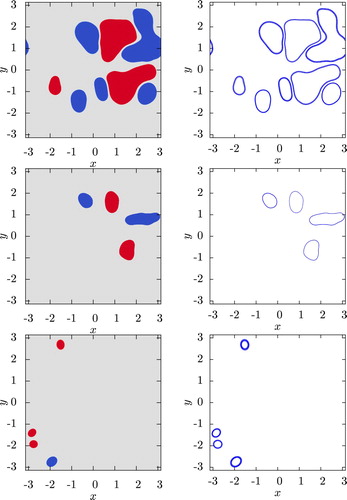
Table 1. Thresholds for the extraction of mixed regions.
Table 2. Thresholds for the extraction of high-speed frontal contours.
Figure 6. Total contour length (open blue circles), rms curvature
(open red squares), and fluctuation curvature
(filled black triangles) for high-speed contours comprising external (left) and internal (right) fronts. Least squares best fit lines are also shown for
(cyan),
(magenta) and
(black). The uncertainty given is the standard error. (Colour online).
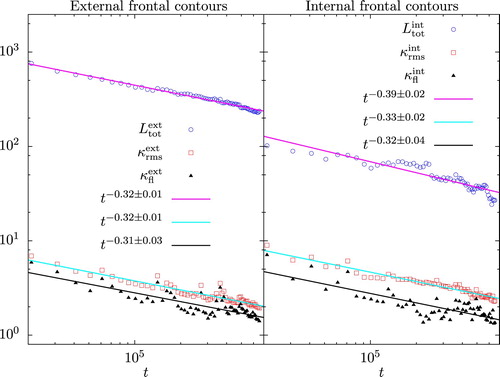
Figure 7. Disturbed PV contours undergoing filamentation after a merger at . The area within the rectangle in the top panel is shown in the bottom panel: the inner two contours (blue and magenta) are undergoing filamentation. (Colour online).
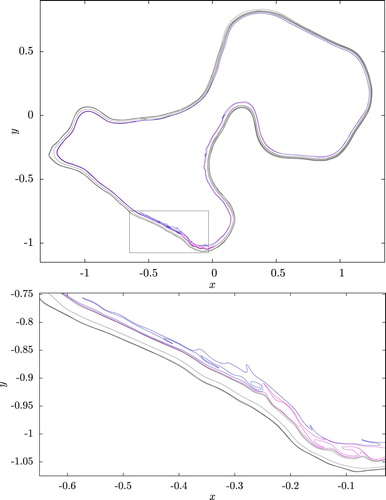
Figure 8. External bounding contours undergoing a reconnection and split. The time is given at the top of each panel. (Colour online).
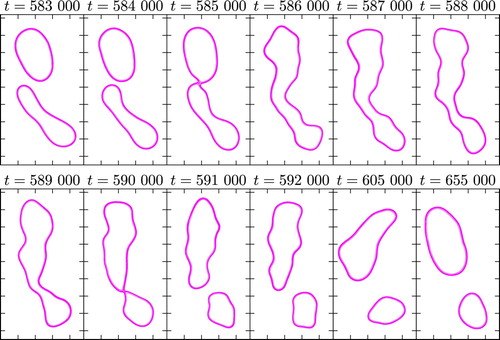
Figure 9. Total arclength (top), enclosed area (middle) and area between contours (bottom) for the contours shown in figure . (Colour online).
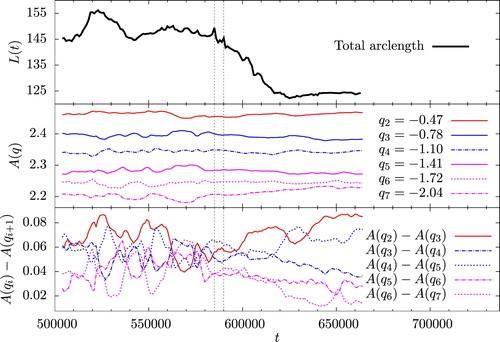
Figure 10. Total contour length (open blue circles), rms curvature
(open red squares), and fluctuation curvature
(solid black triangles) for high-speed contours bounding free vortex cores. (Colour online).
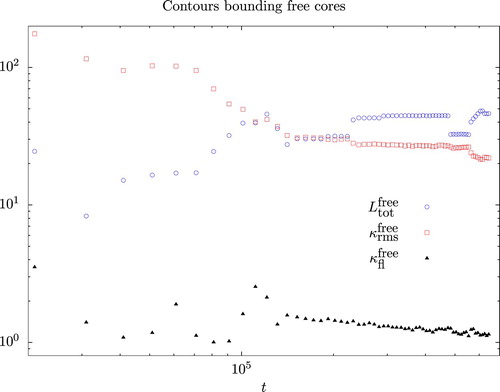
Figure 11. Check of the population-averaged relation (Equation28(28)
(28) ). (Colour online).
